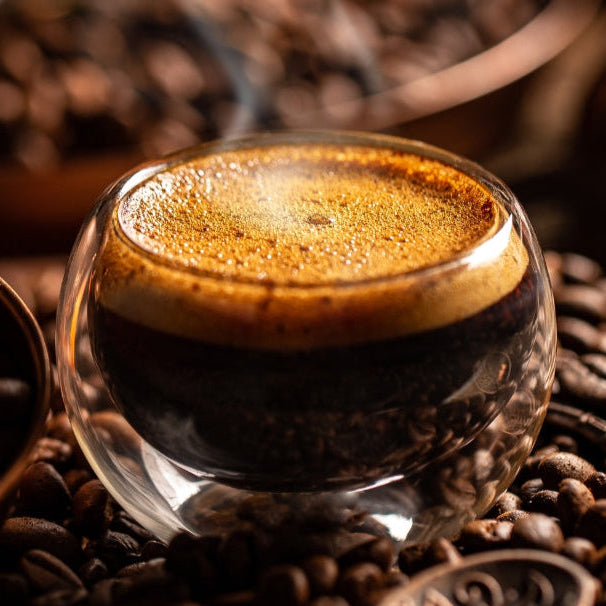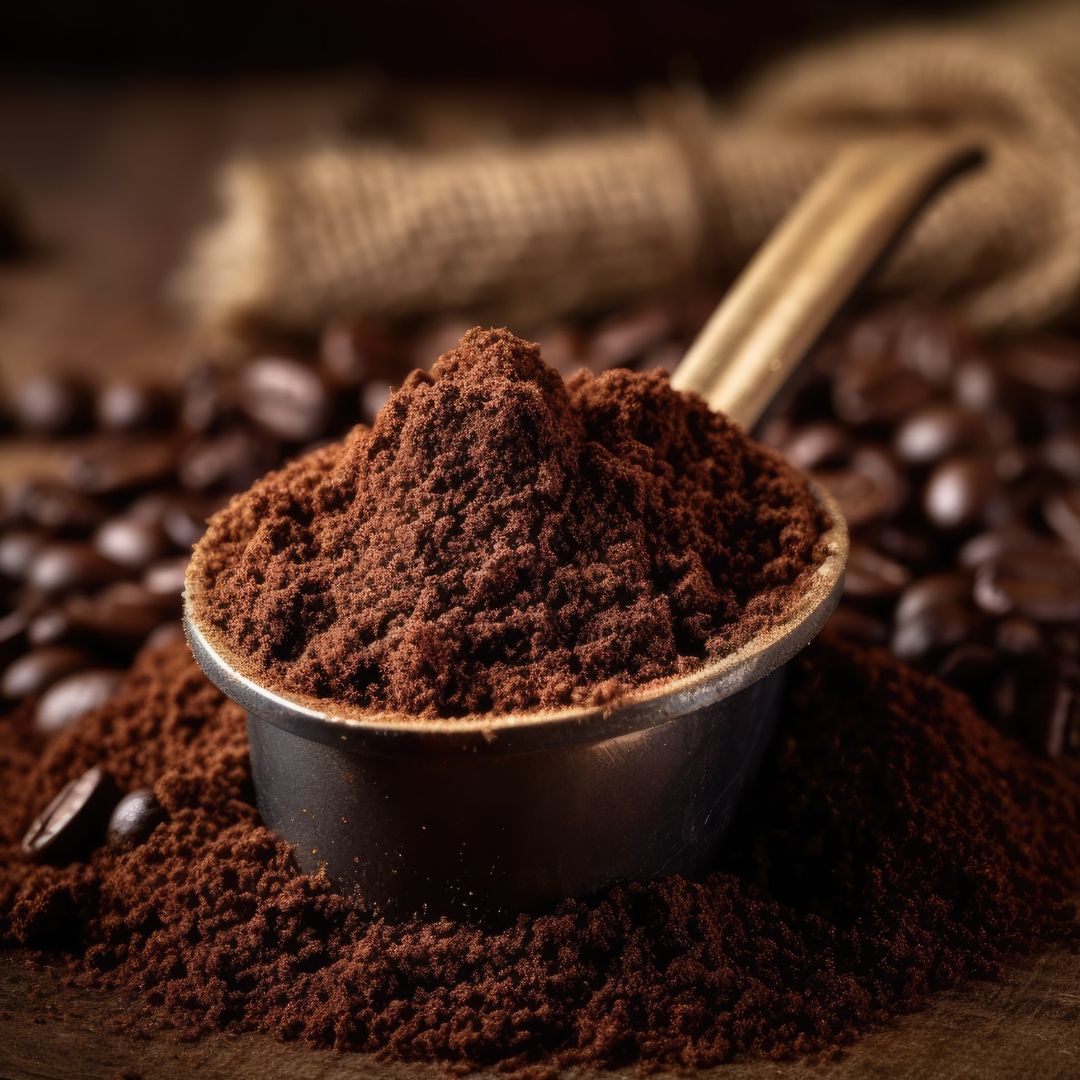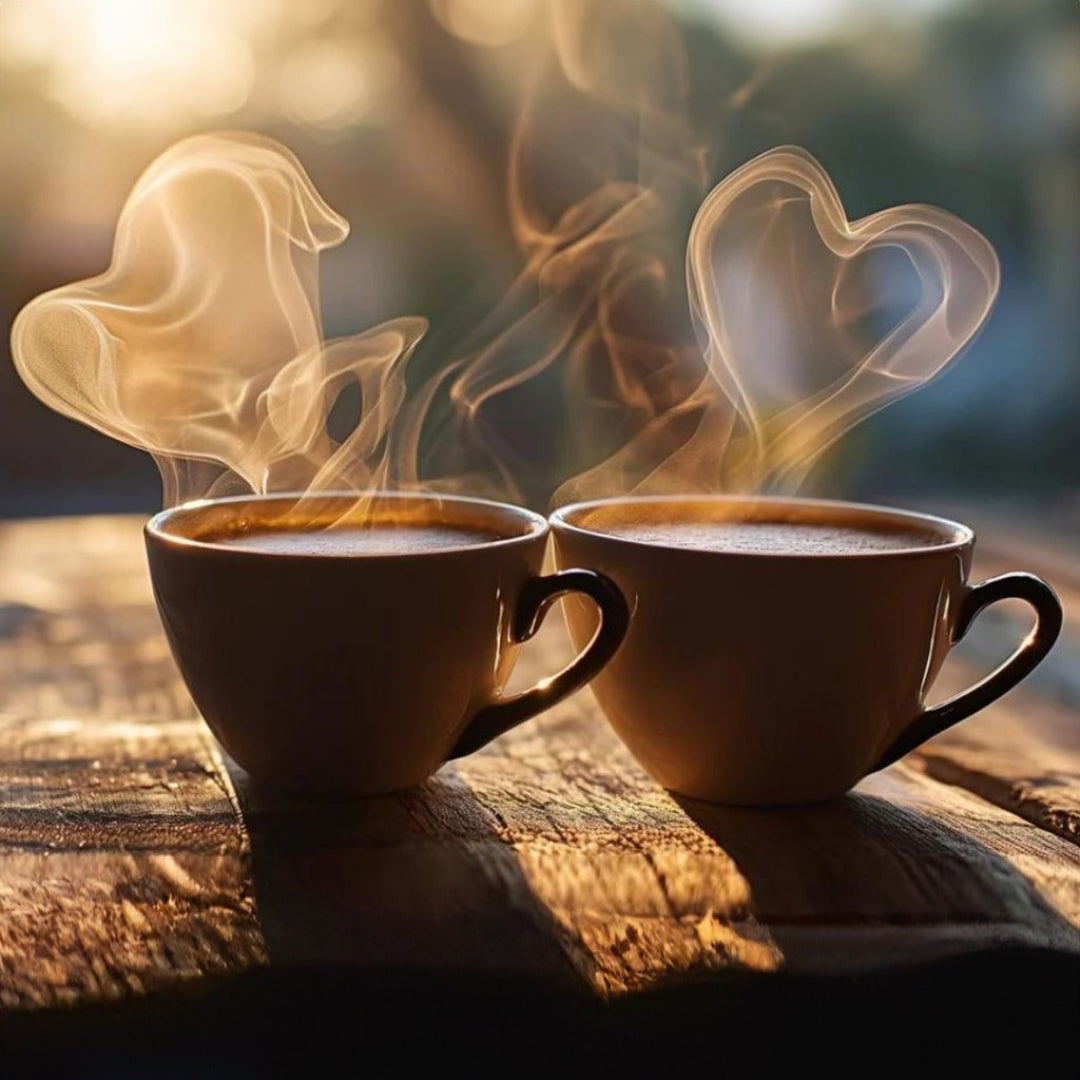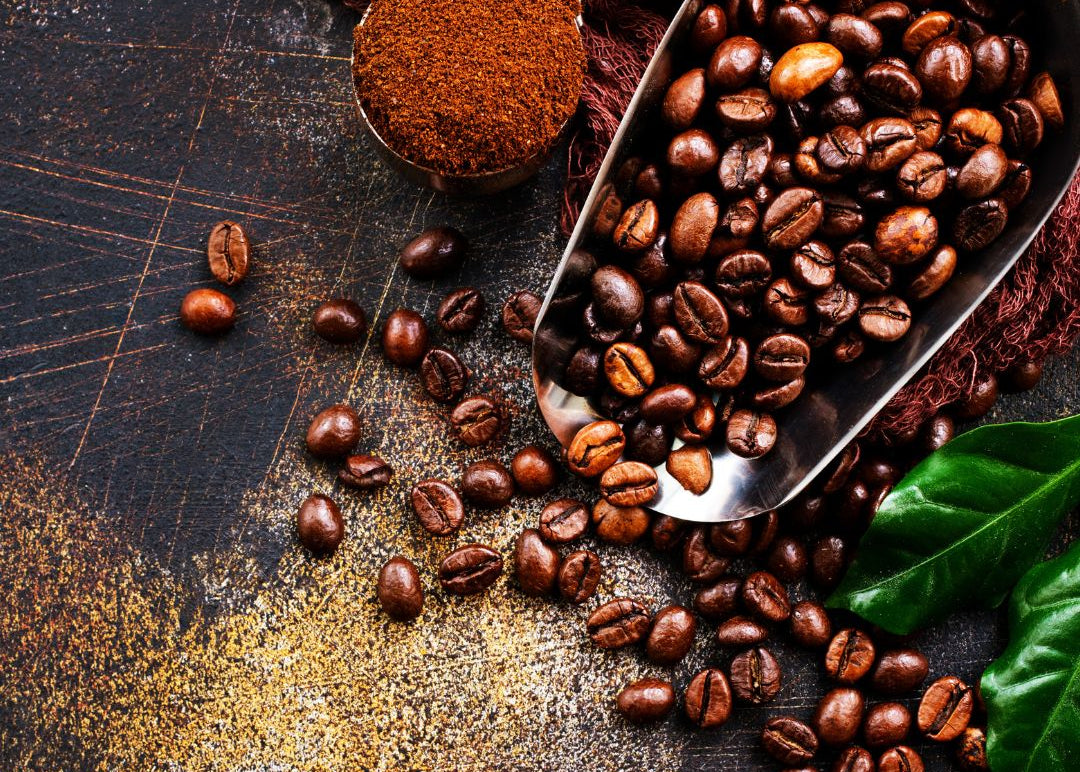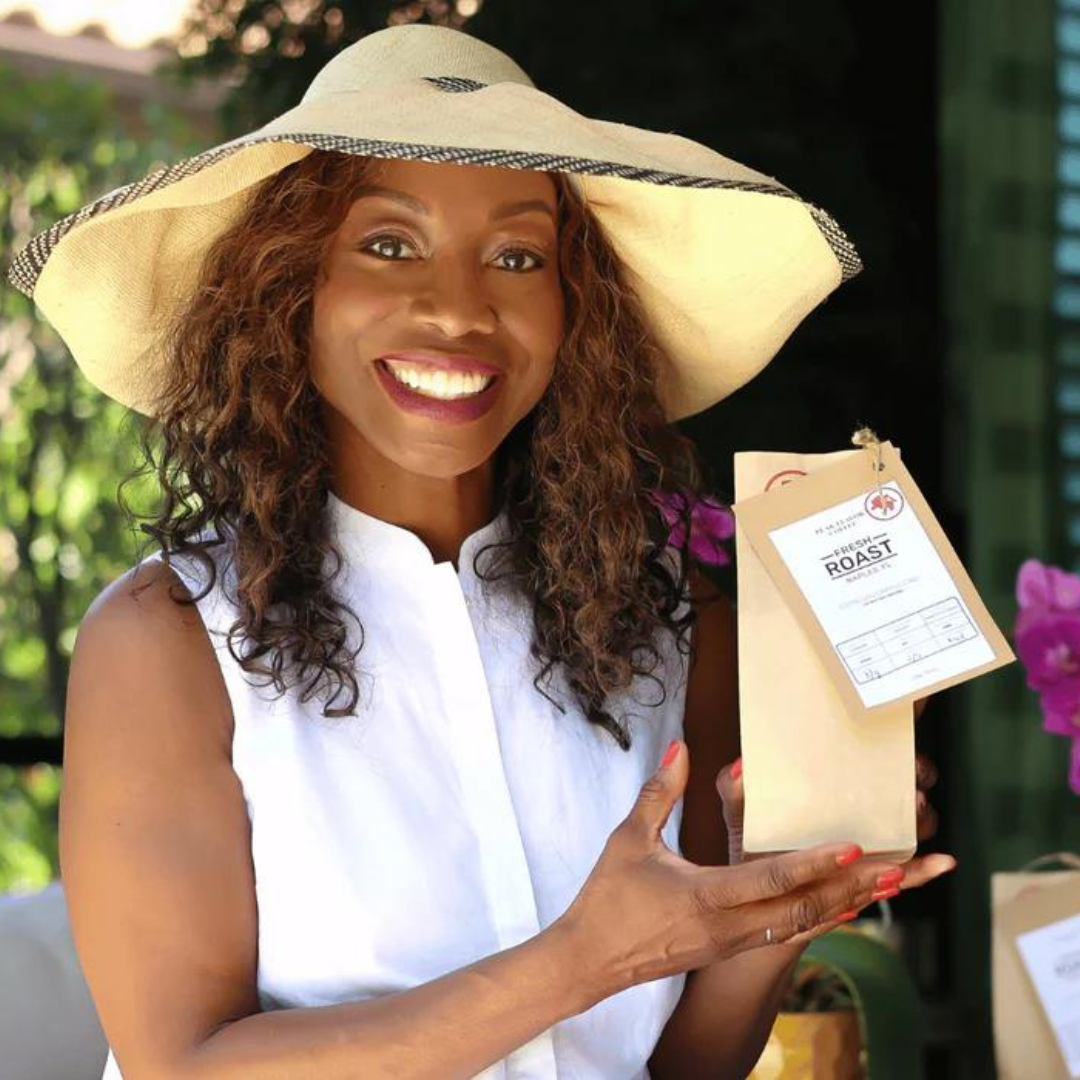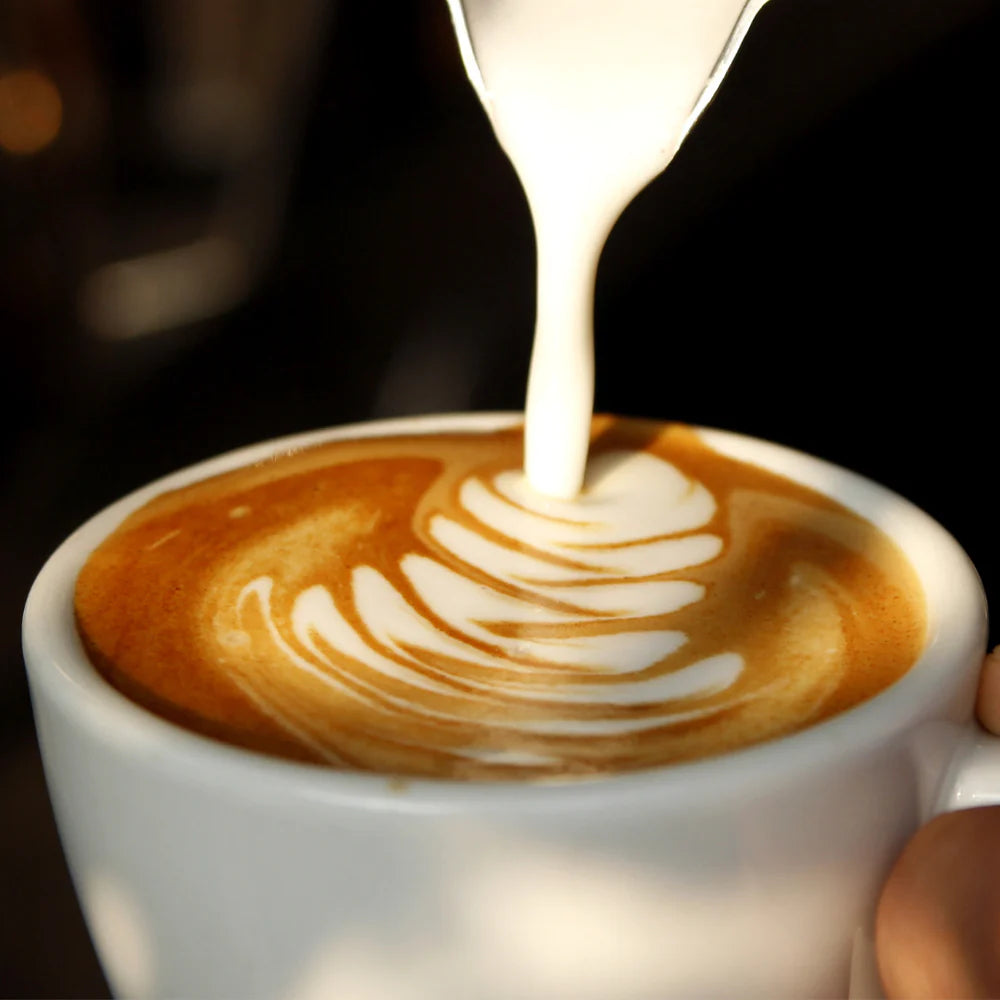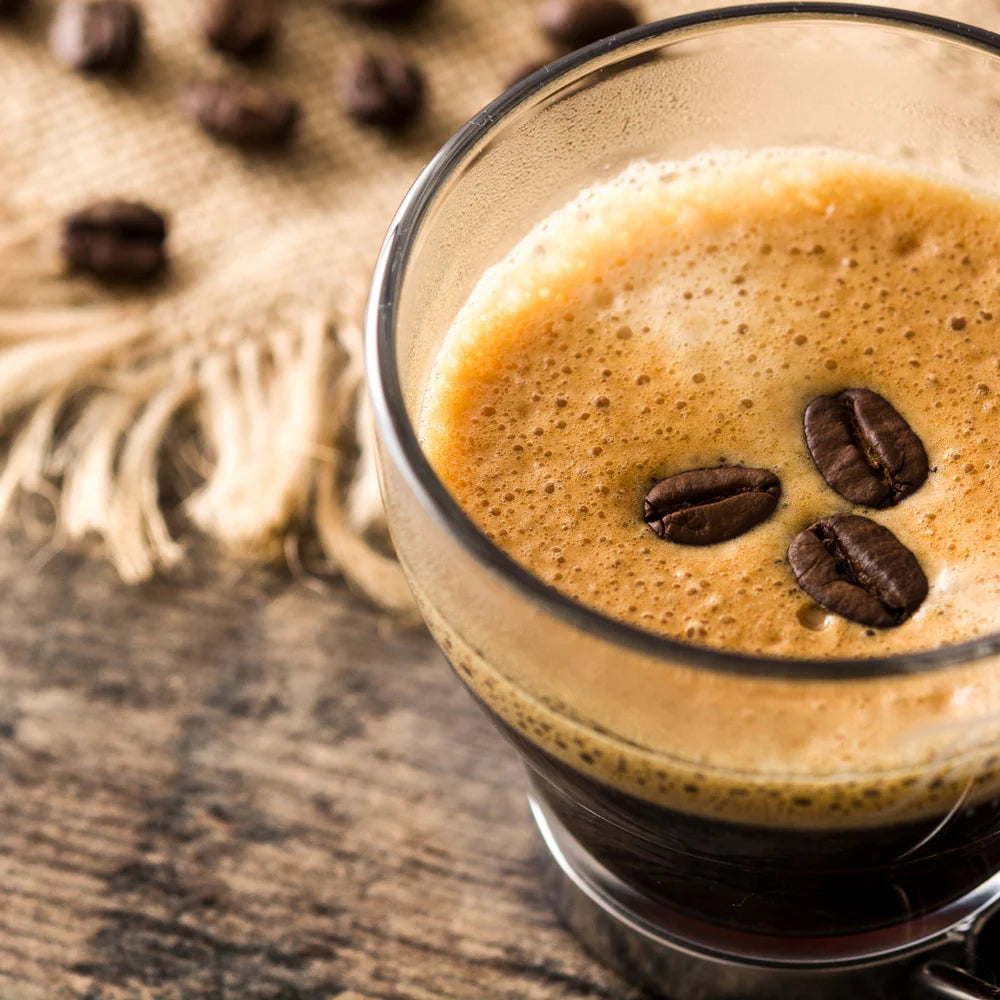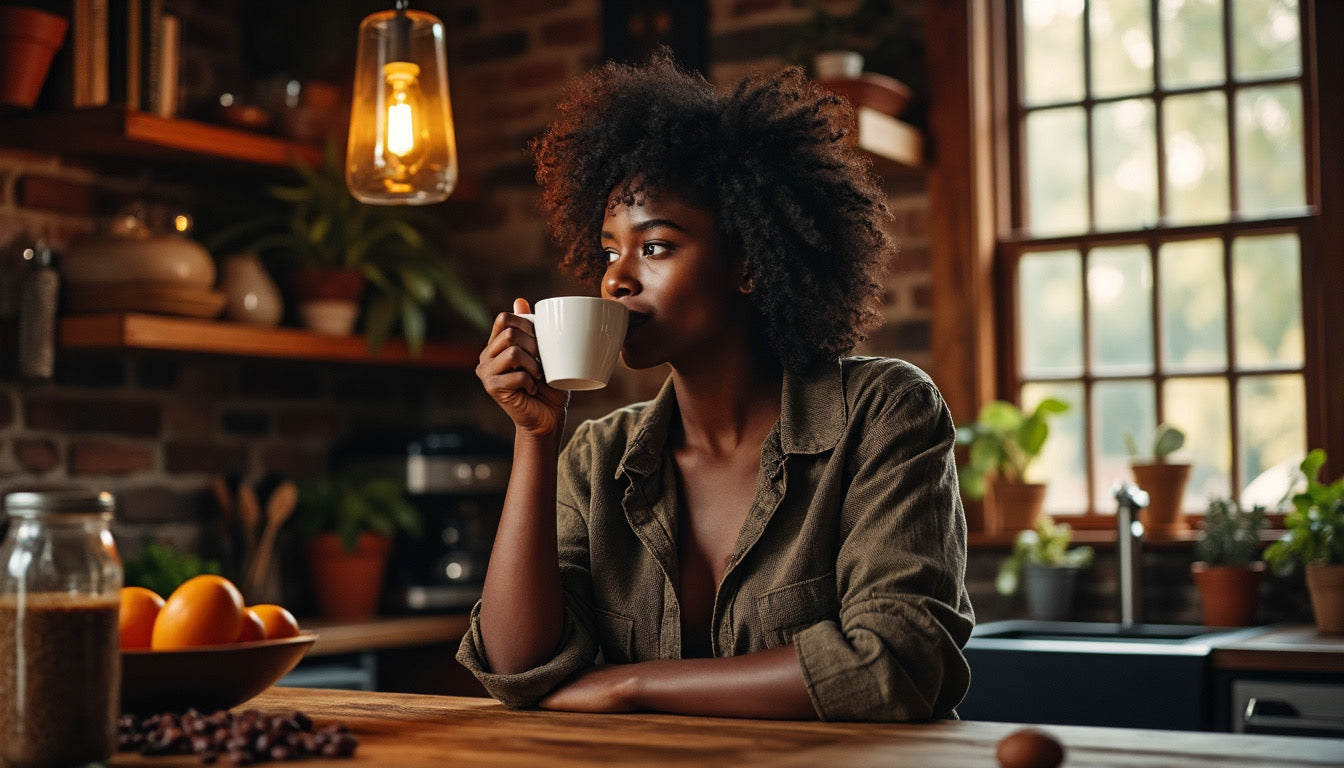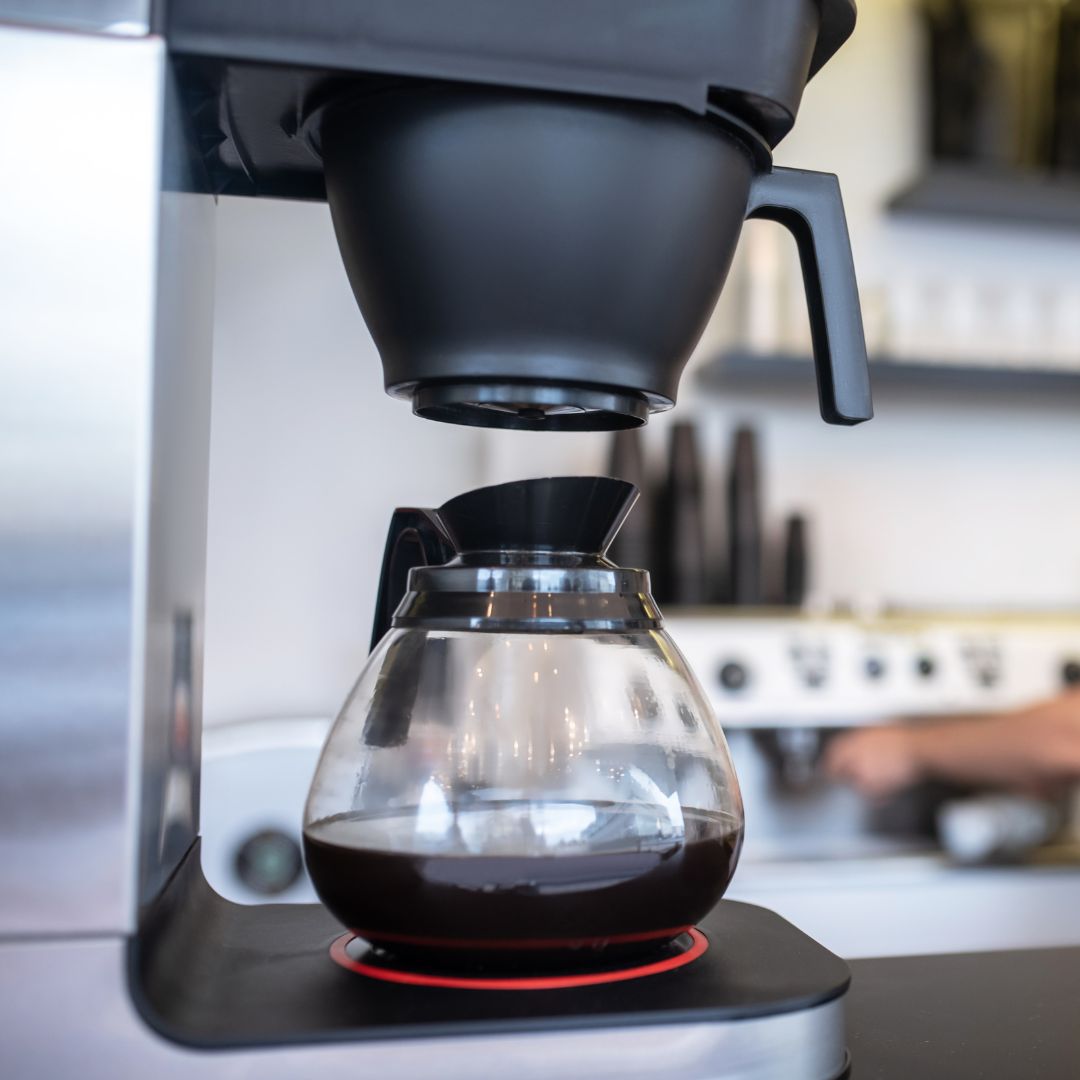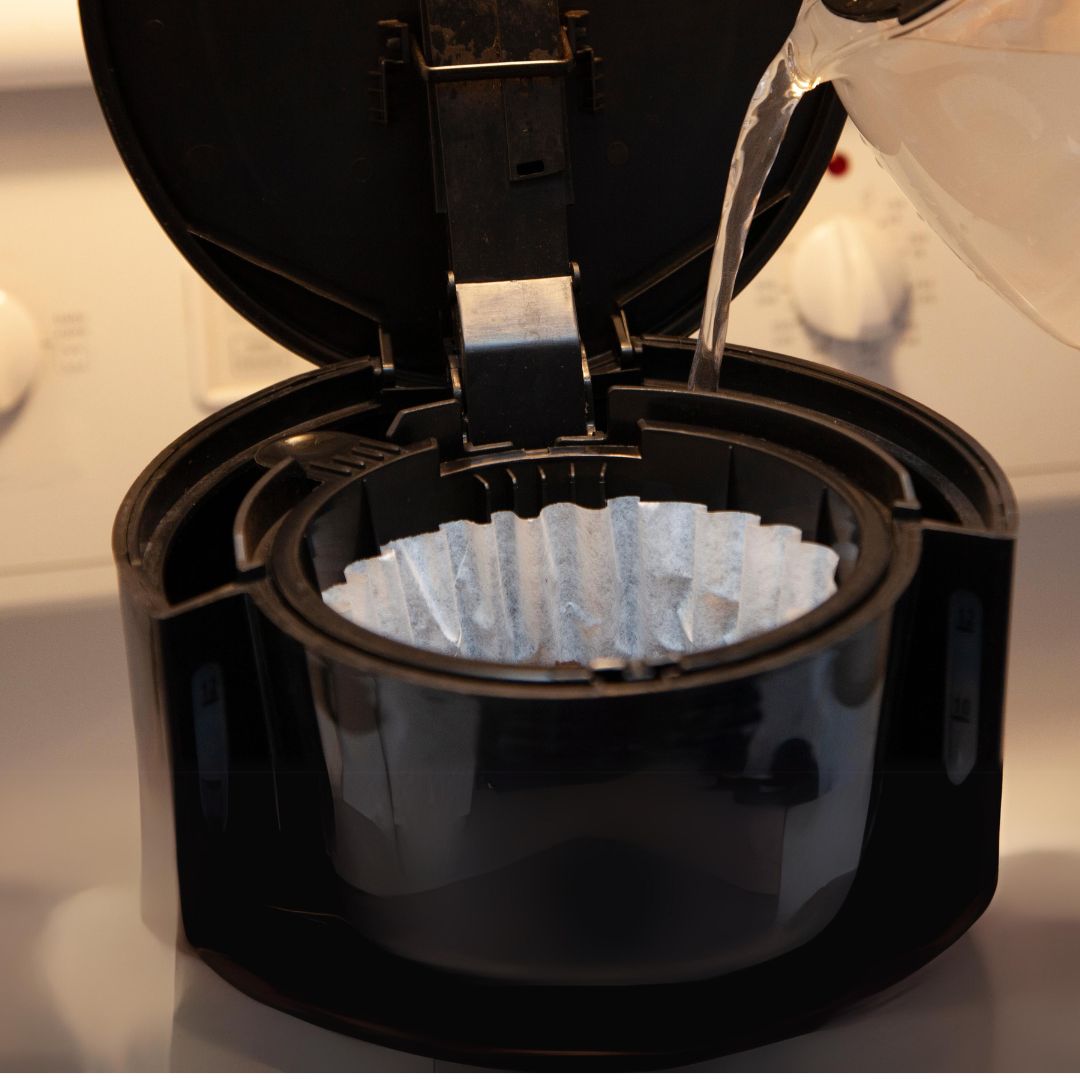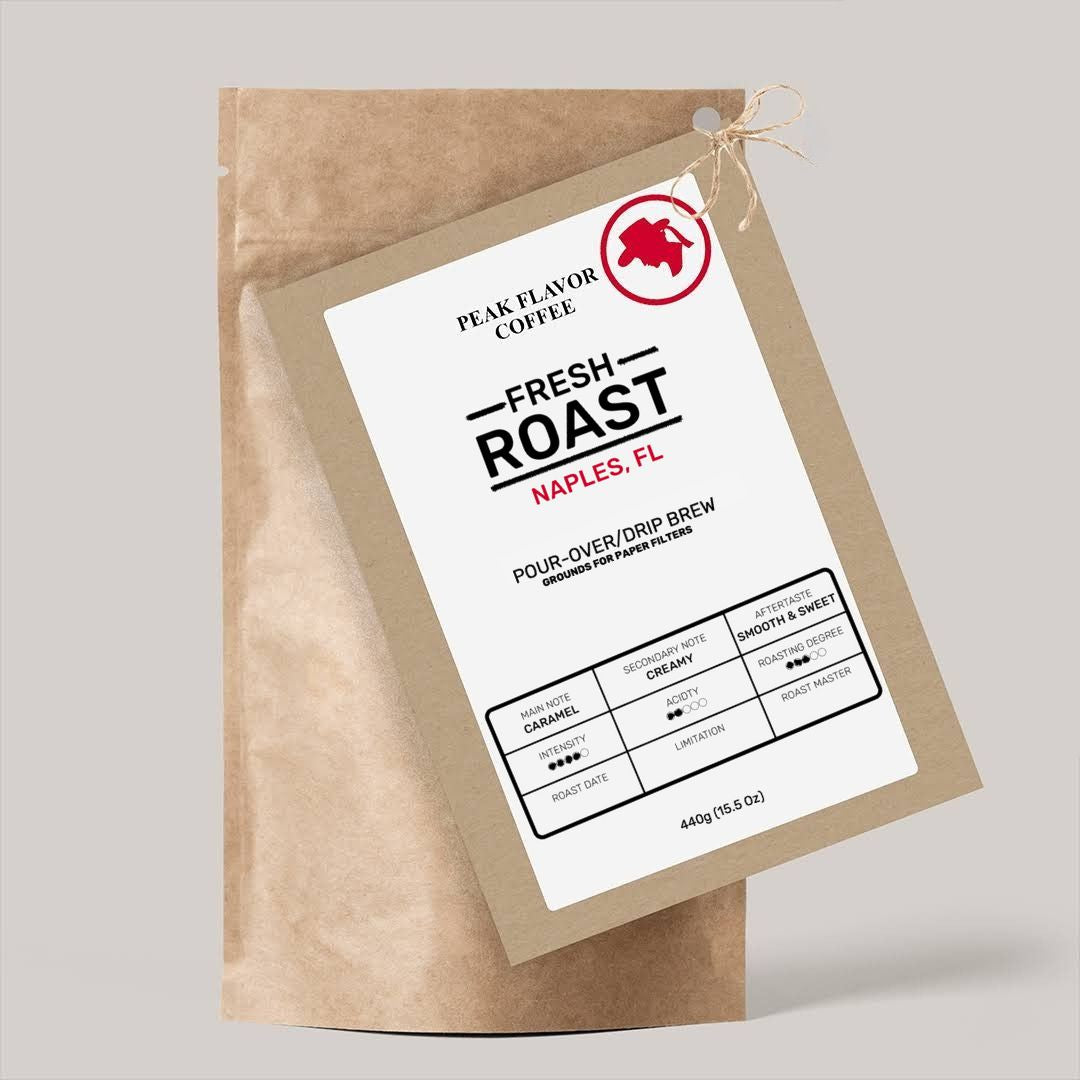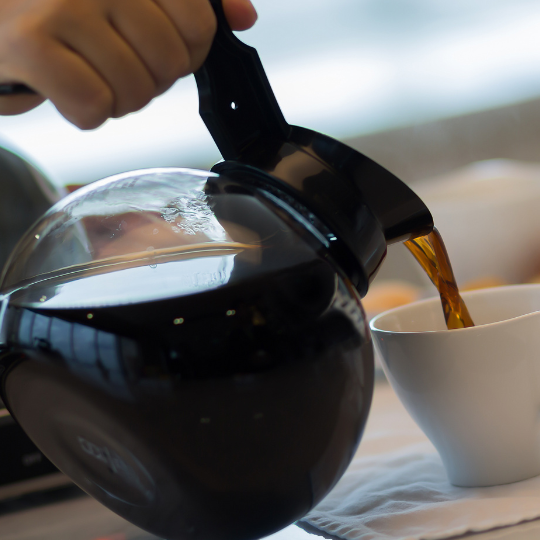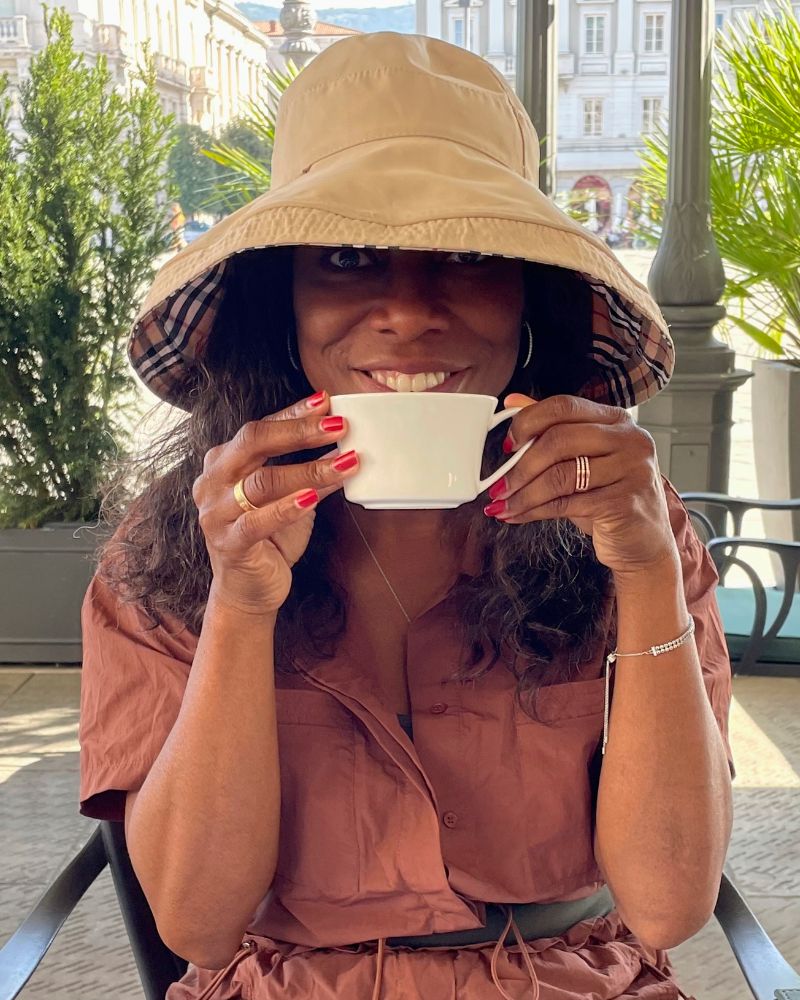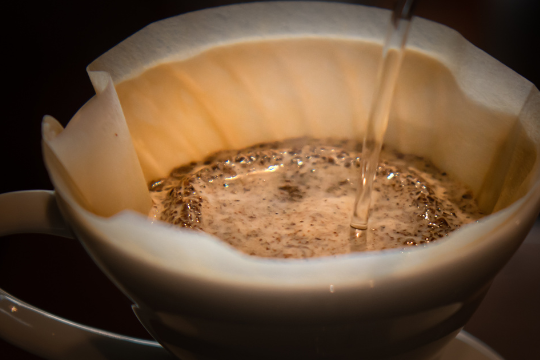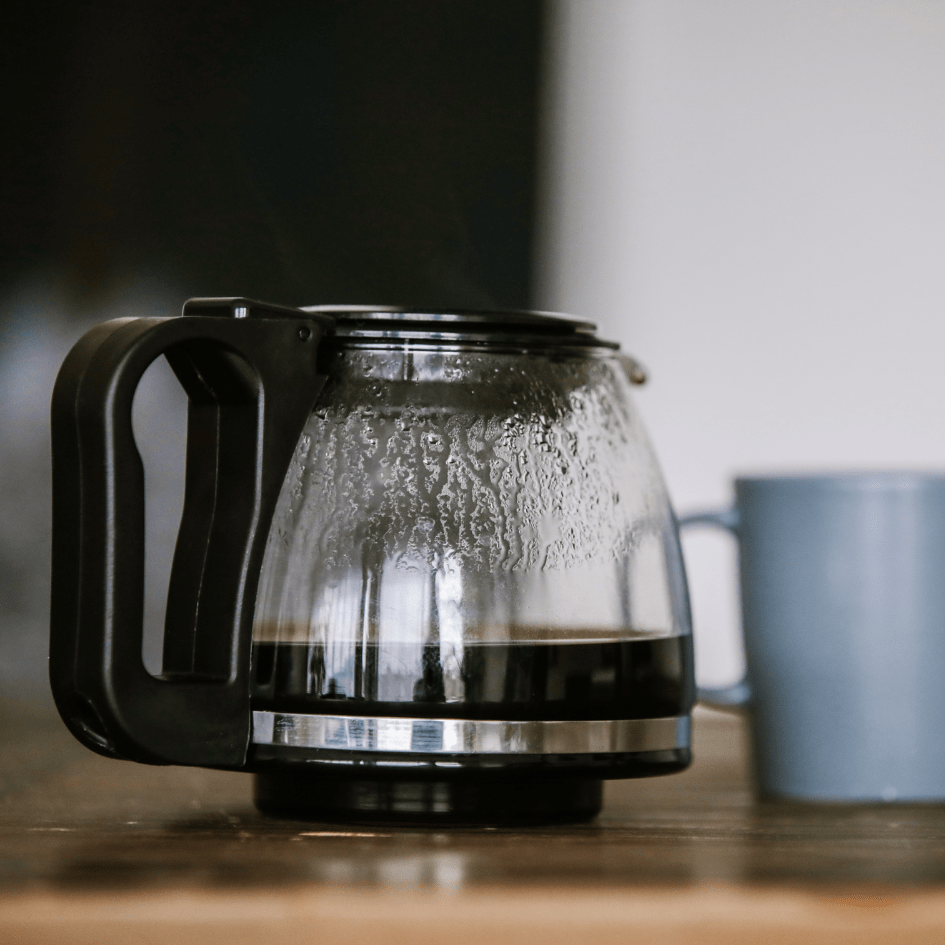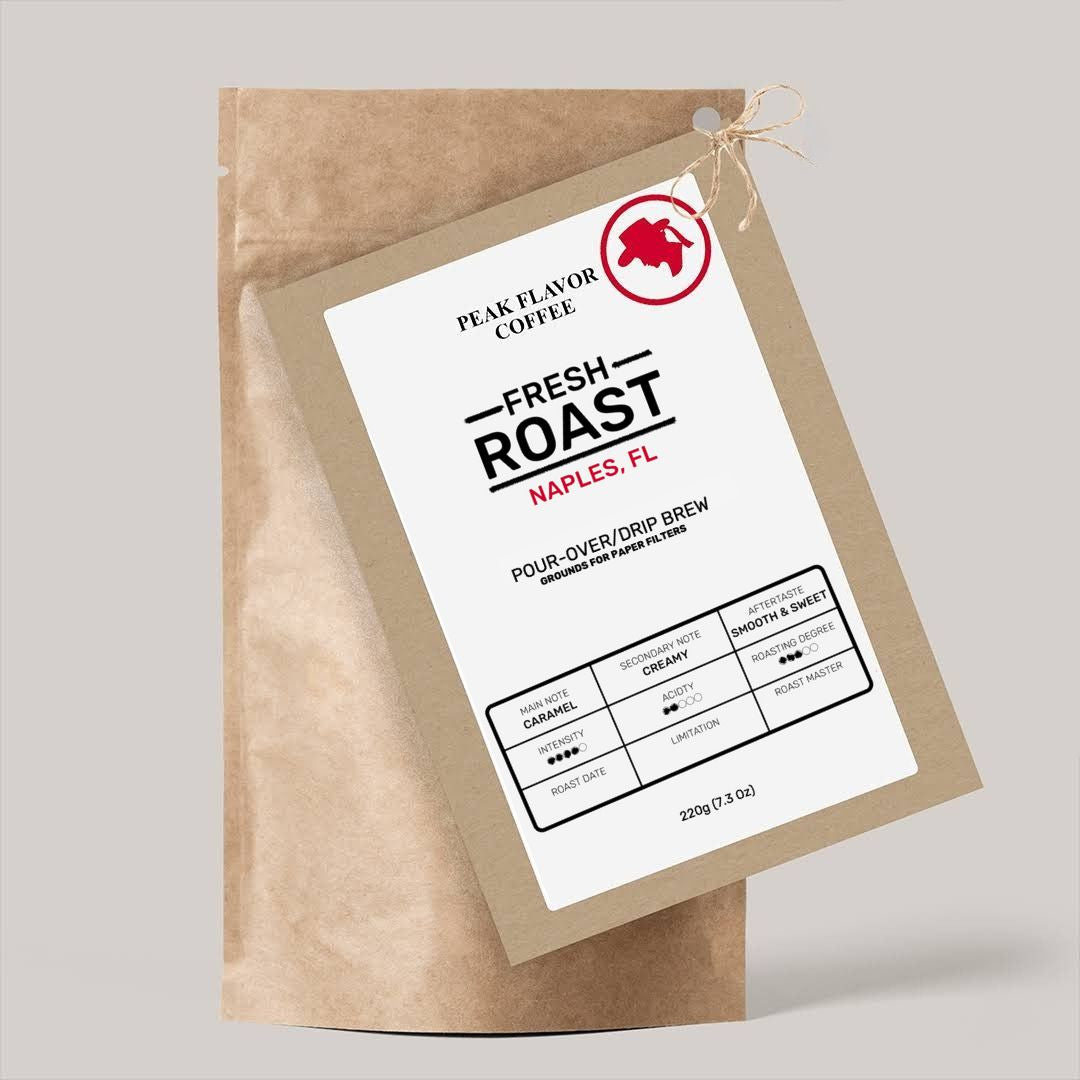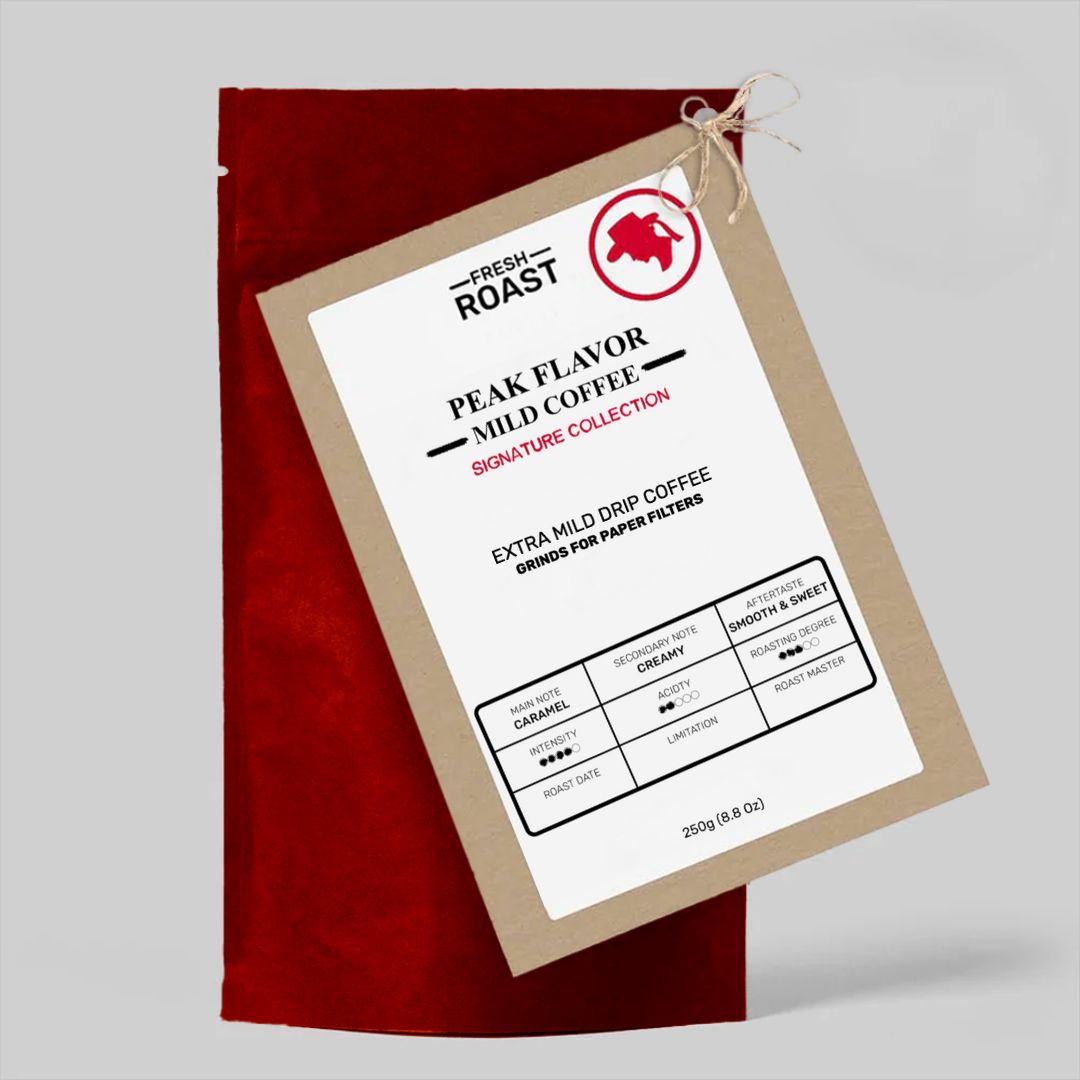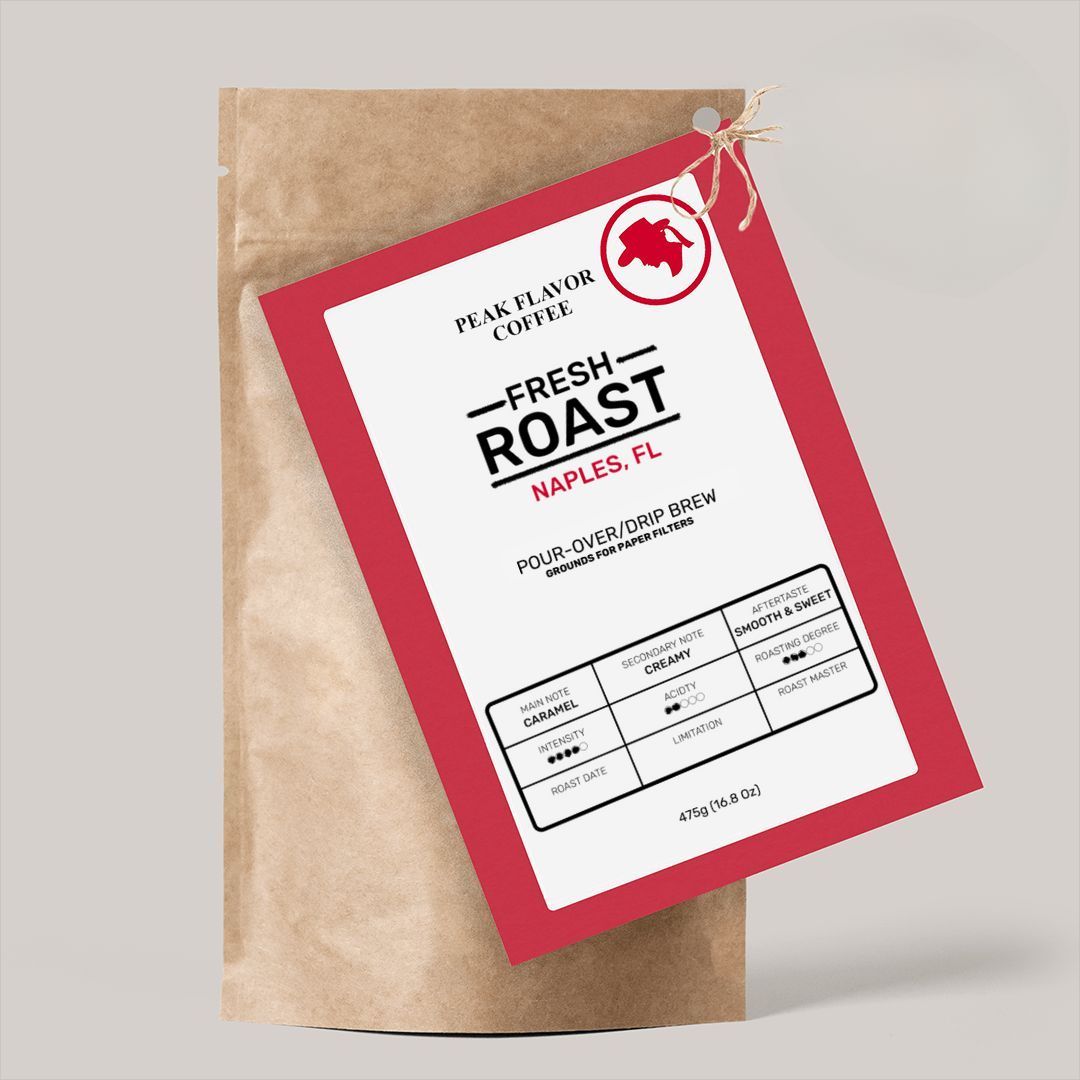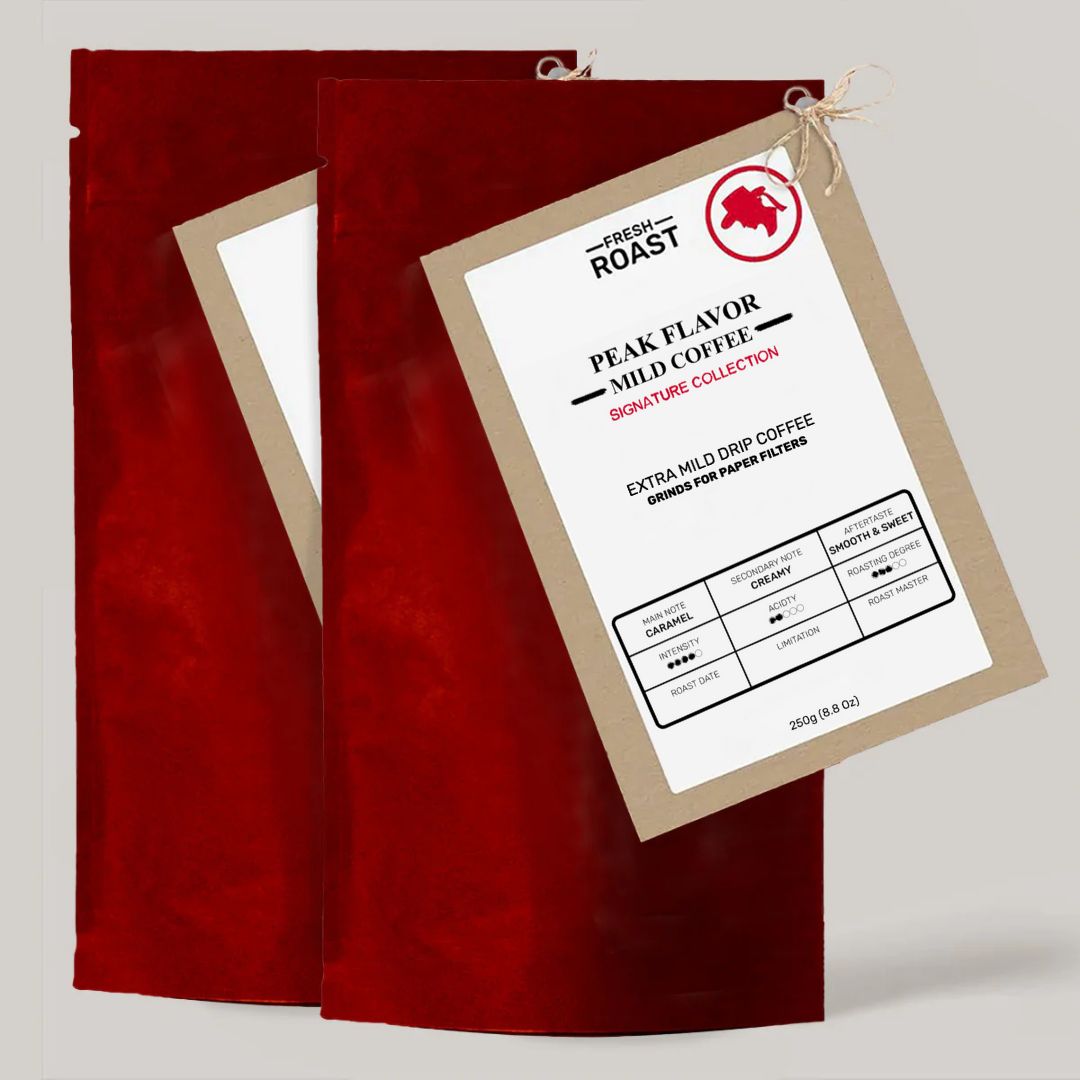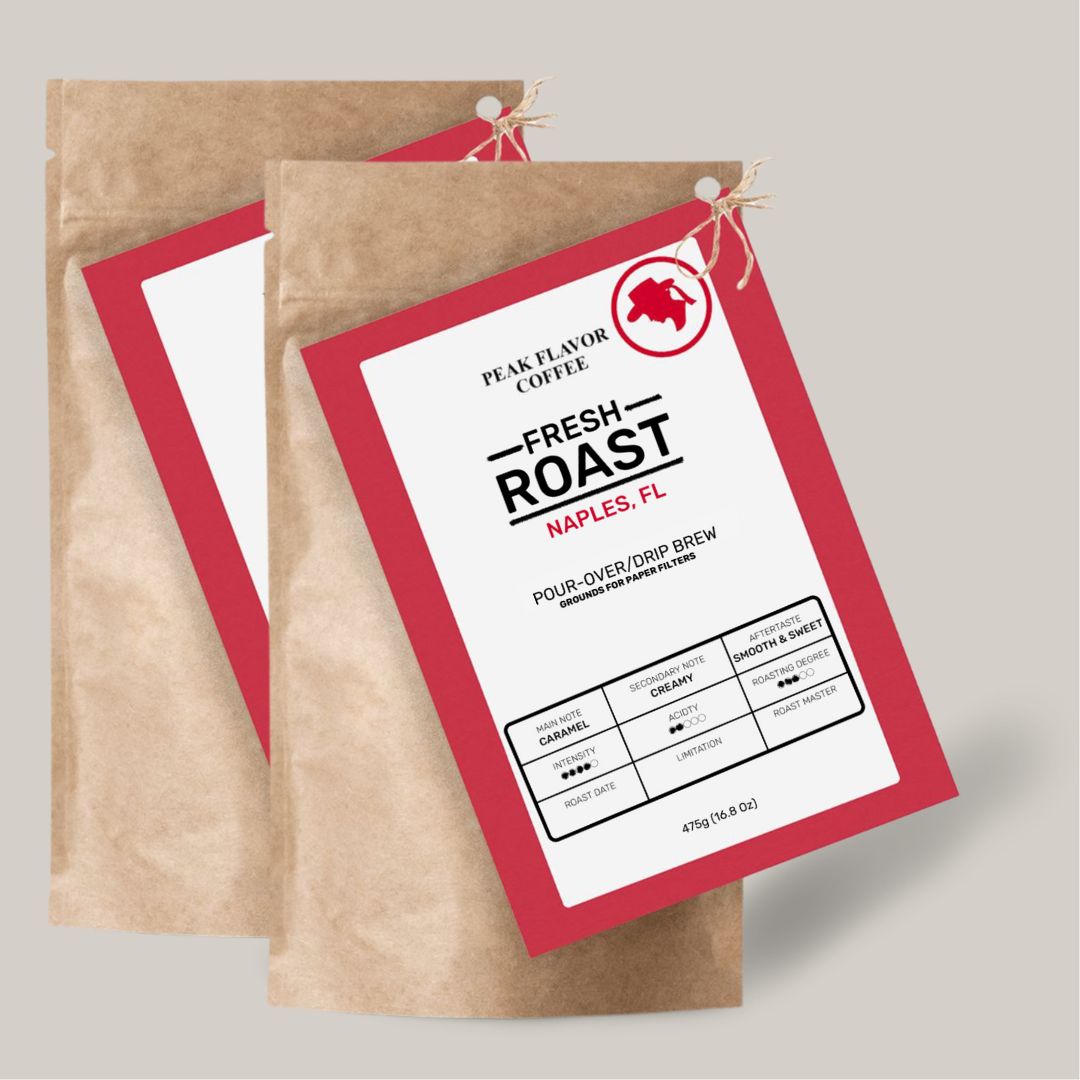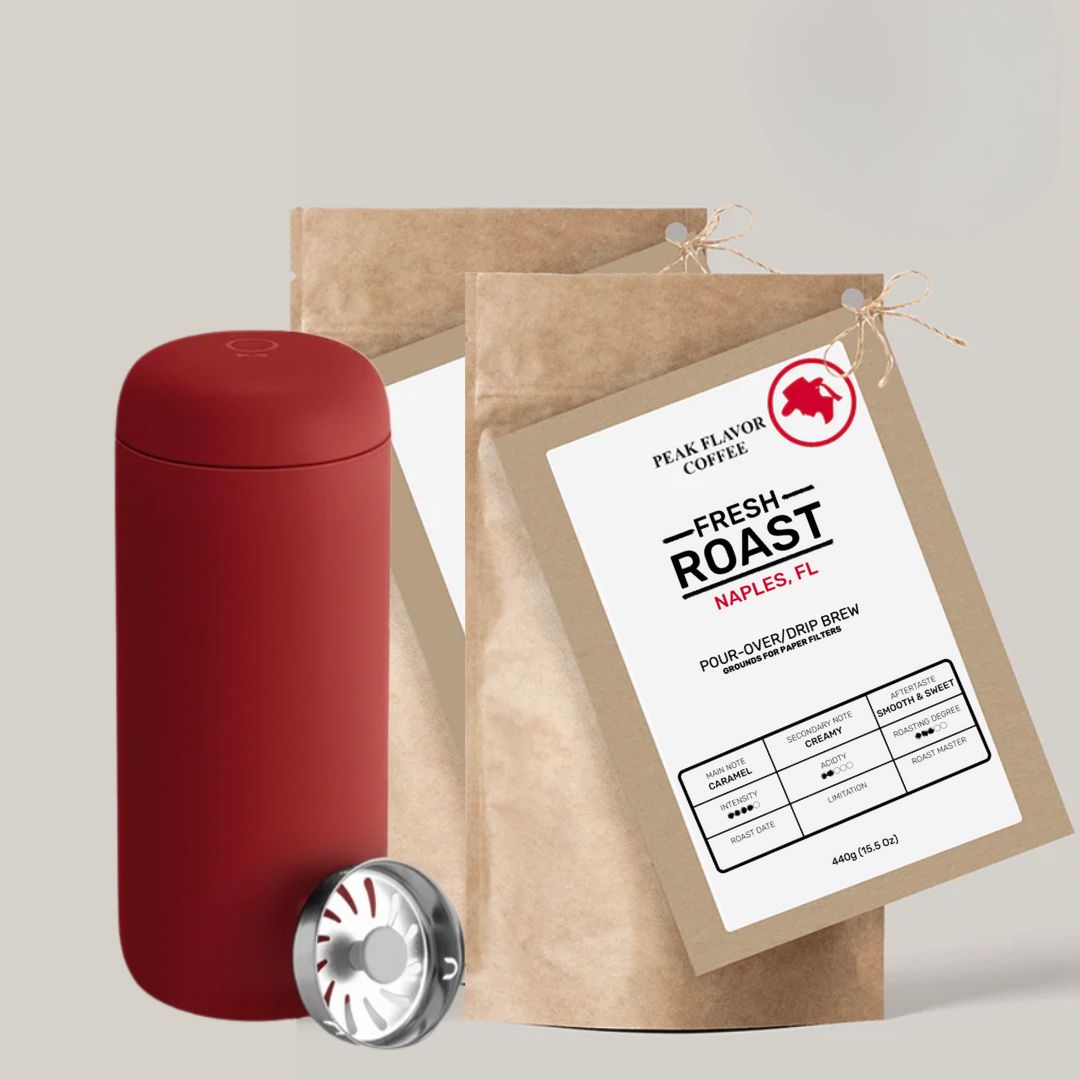Finding the Drip Coffee Sweet Spot
By Melicent, Founder of Peak Flavor Coffee
For years, I brewed my morning coffee with a trusty Mr. Coffee drip machine, only to end up grabbing a $6 latte from the smug barista at the local cafe who judged me for it. You know the type—handlebar mustache, sleeve tattoos, and a look that screamed, “Drip coffee? In that thing? How adorably primitive.”
Truth is, he wasn’t entirely wrong. My home coffee tasted flat, bitter, or just plain sad. And like so many others, I assumed the problem was the machine. Maybe I needed a Chemex, or a $500 precision brewer, or a minor in coffee chemistry. Turns out? Nope. I just needed better coffee.
Not different coffee brands. Not flavored beans. Just the right coffee: the right beans, the right roast, the right grind, and—most crucially—fresh. When I cracked that code, my drip machine transformed from a countertop relic to a caramel-flavored miracle worker.
Now I run Peak Flavor Coffee, where we specialize in freshly roasted, science-backed blends made to work with your drip coffee maker—not in spite of it. Here’s what you need to know to find your own sweet spot, Mr. Coffee and all.
What Is Drip Coffee, Really?
Let’s clear this up first: drip coffee is simply ground coffee brewed by letting hot water drip through a coffee filter into a pot. Whether it’s percolated coffee from your grandma’s chrome beast or a modern programmable Mr. Coffee, it’s all filter coffee. It can be amazing—if you use the right ingredients.
Problem #1: Old Ground Coffee = Bitter, Bland Brews
Supermarket coffee is often pre-ground and roasted months ago—sometimes over 120 days old. By then, it’s lost up to 60% of its aroma and flavor compounds (Illy & Viani, 2005). That’s not a taste profile; it’s a caffeine corpse. If your morning brew needs sugar or syrup to be drinkable, stale beans are probably the reason.

The study by Illy & Viani (2005) found that as coffee ages post-roast, the oxidation of key aromatic compounds rapidly reduces the complexity and sweetness of the flavor profile. Specifically, volatile organic compounds responsible for fruity, floral, and caramel notes begin degrading within the first week, and by the third week, most of the flavor clarity is lost. The oxidation also leads to the formation of papery, cardboard-like off-flavors that overwhelm the bean's original character. This explains why stale coffee often tastes lifeless, and why fresh beans brewed properly can taste naturally sweet and satisfying.
Fix: Use freshly roasted beans (8–14 days post-roast) and grind just before brewing. At Peak Flavor Coffee, we roast in small batches and ship within 24 hours to guarantee freshness.
Problem #2: Wrong Beans, Wrong Results
Want naturally sweet, caramel-noted coffee without adding sugar? Choose Arabica beans—specifically 80-100% Arabica blends. Arabica contains nearly twice the natural sugars and far fewer bitter compounds than Robusta (Clifford & Wilson, 1985).
Our blends use Brazilian Santos and HG Honduras beans, mainly for their caramel notes, rounded out with a small percentage of low-acid Robusta from Vietnam for boldness and extra caffeine (without the bitterness).
Problem #3: Roast Level Matters More Than You Think
Medium roast is your caramel jackpot. At 210–220°C, the bean’s sugars caramelize into furans and pyrazines—the good stuff that smells like toasted marshmallows and tastes like sugar without the spoon (Mottram, 2007).

Dark roasts? They burn off those delicate sugars and replace them with alkylpyridines (read: bitterness).
Pro Tip: Skip the oily, jet-black beans. Go for medium-roasted beans that hit their flavor peak 8–14 days post-roast.
Problem #4: Grind Size Is Not One-Size-Fits-All
Your Mr. Coffee was designed for a medium-coarse grind—about the texture of sea salt. Go too fine (espresso territory) and you get bitter over-extraction. Too coarse? Sour, weak coffee. Burr grinders give you consistent particles that extract evenly and avoid clogging your filter.
At Peak Flavor Coffee, we take grind size pretty seriously. Because it is. For drip brewers that use paper filters, we grind on professional burr grinders to a precise 750 microns with 98% consistency. That kind of precision isn't possible with conventional blade grinders, which produce uneven grind sizes—leading to a chaotic mix of under- and over-extracted flavors in your cup. A Mr. Coffee machine can't fix that.

We believe so strongly in this that we offer pre-ground options tailored specifically for drip coffee makers. Since we ship in small, fresh batches, there's no worry about your coffee going stale before you finish it. In fact, once you taste how these perfectly ground, freshly roasted beans perform in your Mr. Coffee, there's a good chance you won’t want to go back to supermarket grinds. It’s the kind of upgrade that doesn’t require a new machine—just better beans and a grind that matches them.
Problem #5: The Drip Coffee Ratio
Lockhart’s 1:16 ratio (1 part coffee to 16 parts water) is the sweet spot for drip coffee (Lockhart, 1957). That’s 60 grams of coffee per liter of water—about 10 tablespoons for a standard Mr. Coffee pot.
Need a stronger kick? Try 1:15. Prefer a lighter brew? Go 1:17. But always weigh your beans. Scooping is for ice cream.
Problem #6: Water Quality Can Ruin Everything
Your tap water might be sabotaging you. Minerals like magnesium enhance sweetness; calcium, on the other hand, emphasizes bitterness (Hendon et al., 2014).
Solution: Use filtered water with 50–100 ppm hardness. Spring water like Volvic works great. Avoid distilled water—it extracts poorly. And always preheat your machine by running a cycle of hot water first.
Filter Coffee Filters: The Unsung Hero
Use bleached paper filters and rinse them with hot water before brewing. This removes papery residue and warms the brew basket, improving flavor extraction.
The Bottom Line: Your Mr. Coffee Deserves Respect
Look, you don’t need a fancy pour-over setup to make phenomenal coffee. You just need:
- Fresh, medium-roasted beans (8–14 days old)
- 80-100% Arabica blend, with maybe a dash of low-acid Robusta
- Medium-coarse grind, consistent and clog-free
- Proper drip coffee ratio (1:16)
- Filtered water with the right mineral balance
Do this, and you’ll get a cup so naturally sweet and complex, your barista might just cry into his latte art. Ready to find your drip coffee sweet spot? Start with a bag of our best drip coffee blends, roasted just for machines like yours: Shop Peak Flavor Drip Coffee
Because life is too short for bitter coffee—especially when the fix is this easy.
Melicent
Interested? Read more about the coffee sweet spot.

